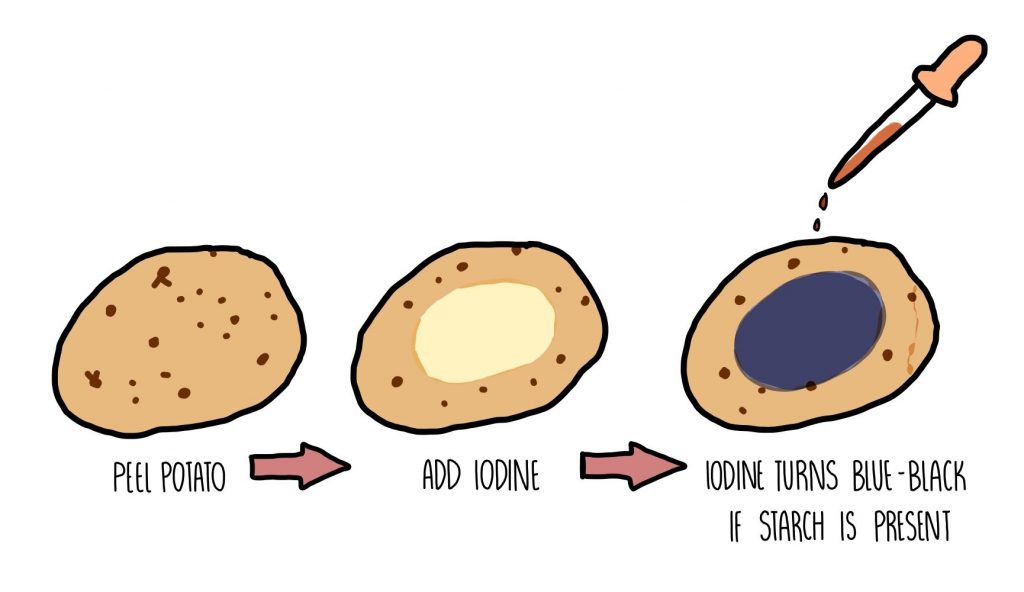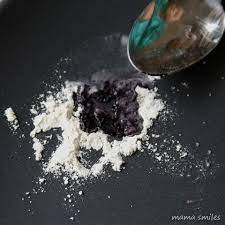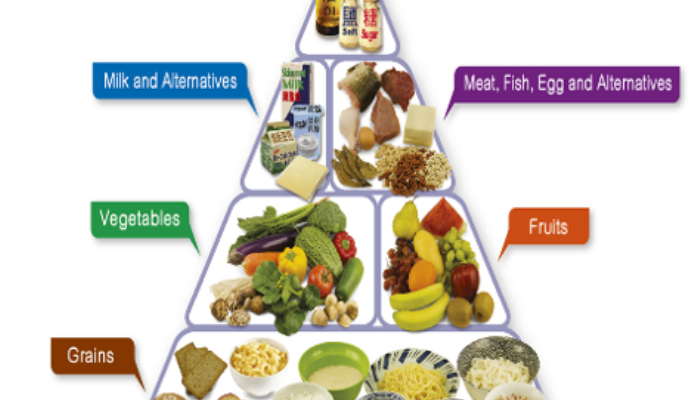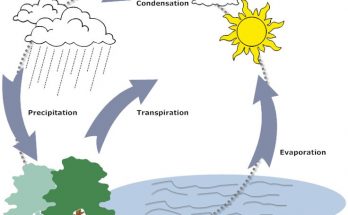Components of Food
The edible substances which we eat to obtain energy for growth, repair and maintenance of the body and to fight against occurrence of diseases, are called food.
Nutrients
Each food item is usually made up of one or more ingredients, which we get from plants or animals.These ingredients contain nutrients which are needed by our body. These components are called Nutrients.
What are the major components of food ?
The Major Components or nutrients of food are-
- Carbohydrates
- Proteins
- Vitamins
- Fats
- Minerals
- Water and roughage
Also Check – Class 6 Science Chapter 1- Food Where Does it Come from- Notes
What is Nutrition ?
It is the process of obtaining food , necessary for good health and growth of living organisms .
Carbohydrates
- There are many types of carbohydrates. The main carbohydrates found in our food are in the form of starch and sugars.
- It provides energy to our body.
- Some sources of carbohydrates are wheat, rice, maize, pearl millet, potatoes, sugar, jaggery (gud), honey, fruits (banana, mango and papaya), etc. Rice is a ‘carbohydrate rich’ source of food.
- The carbohydrates in our food are obtained mainly from plant sources.
Proteins
- Proteins are body-building food. Protein-rich foods are called body-building foods.
- These are essential for the growth and repair of the body tissue.
Proteins can be divided into two groups depending on their sources:
Animal proteins
- These are obtained from animal products like milk, cheese, egg, fish or meat.
Vegetable proteins
- These are obtained from plants like gram, moong, tuar dal, beans, peas, soybeans, etc.
Fats
- Fats also provide energy to our body.
- Fats provide twice as much energy as provided by the same amount of carbohydrates.
- They also provide support to our body and insulate or cushion the soft tissues and organs.
- Fats and oils are similar substance, the only difference being that fats are solid at room temperature, whereas oils are liquid at room temperature.
- Fats can be obtained from plants as well as from animals.
- Some of the plant sources of fats are groundnut oil, mustard oil, coconut oil, sunflower oil, soybean oil, til oil and nut oil etc.
- Some of the animal sources of fats are butter, ghee, milk, cream, cheese, eggs and meat.
The foods which contain fats and carbohydrates are referred to as ‘energy giving food’.
Vitamins
- Vitamins are a group of nutrients that our body requires in small quantities.
- These are essential for the proper working of the body but do not provide energy (protective food).
If our diet is lacking in any vitamin, we suffer from certain diseases called deficiency diseases.
Vitamin may be divided into two classes –
Fat soluble vitamins
Vitamin-A, D, E and K.
Water soluble vitamins
B-complex and vitamin-C.
Vitamin-A
- Vitamin-A protects the eyes, skin and hair. So, it is necessary for good eyesight, healthy skin and hair.
- The deficiency of vitamin-A causes night blindness.
- The various sources of vitamin-A are milk, butter, carrot, fish liver oil, eggs, green vegetables, mango, papaya, etc.
Vitamin-B
The group of vitamins is called B-complex.
- Vitamin-B1 (Thiamine) It is essential for growth and proper functioning of the digestive system, heart, nerves and muscles. Vitamin-B₁ is present in milk, egg, meat, whole grains, cereals, potato, yeast and green vegetables. Deficiency of vitamin-B, causes beri-beri (affects nervous system).
- Vitamin-B2 (Riboflavin) It is essential for healthy skin and growth. It is present in yeasts, eggs, meat and peas. The deficiency of vitamin-B2 causes cheilosis (lips become inflamed).
- Vitamin-B3 (Niacin) It is essential for healthy skin, proper functioning of the digestive and nervous system. It is present in whole cereals, potatoes, tomatoes, meat, fishes, etc. The deficiency of vitamin-B3 causes pellagra which affects the skin, digestion and nervous system.
- Vitamin-B12 (Cyanocobalamin) It helps in the formation of red blood cells. Lack of vitamin-B12 causes Anemia. Vitamin-B₁2 is present in liver, eggs, milk, fishes, etc.
Vitamin-C
- Vitamin-C (ascorbic acid) is necessary for keeping teeth, gums and joints healthy.
- It also increases the resistance of our body to infection and helps to fight diseases.
- It is present in citrus fruits, amla, tomato, guava,and green vegetables. Actually, almost all the fresh fruits and vegetables contain some vitamin-C.
- Lack of this vitamin causes scurvy.
Vitamin-K
- It helps in the clotting of blood.
- Lack of vitamin-K causes hemorrhage.
- The source of vitamin-K is green vegetables (like spinach), egg yolks, soybean oil, etc.
Vitamin-D
- It helps the body to use calcium for formation of strong bones and teeth.
- Its deficiency causes rickets (in children).
- It is present in milk, butter, green vegetable and sunlight helps our skin to prepare vitamin-D.
Minerals
- Minerals are required for proper functioning, normal growth and good health.
- Minerals are needed to build bones and teeth, formation of blood, coagulation of blood and functioning of muscles, nerves, thyroid glands, etc.
- They also control or affect the working of some glands like thyroid.
- Minerals are needed by our body in small amounts like Fe, Ca, P, K, Na, I and F.
- Iron is important for the formation of a red-coloured pigment known as hemoglobin in our blood. This pigment is essential for transport of oxygen through blood. Blood gets its red color due to the presence of hemoglobin.
- Calcium is essential for the development of healthy bones and teeth.
- Phosphorus is required for healthy bones and teeth.
- Sodium is essential for proper functioning of muscles and nerves in the body.
- Small amounts of fluorine are essential for general health of bones and teeth.
Water
- Water makes up almost 70% of our body weight and various life processes are impossible without it.
- We take in water not only directly by drinking, but also as part of the food we eat.
- Fresh fruits and vegetables also provide a lot of water to our body, e.g. tomatoes, spinach, oranges, water melons, etc.
- It helps our body to absorb nutrients from food.
- It also helps in throwing out some wastes from the body as urine and sweat.
- The loss of a lot of water from the body is called dehydration. It can happen due to diarrhea, vomiting, burn or heat stroke.
- Acute dehydration can even cause death.
Roughage (Dietary Fiber)
- Roughage is the fibrous matter present in food which cannot be digested.
- It is mainly an indigestible carbohydrate called ‘cellulose’ which is present in plant cell walls. Roughage is also called dietary fiber (fiber which can be eaten).
- It does not provide any nutrient to our body but is an essential component of our food and adds to its bulk.
- Whole grains, pulses, potatoes, fresh fruits and vegetables are the main source of roughage. Many doctors believe that a high fiber diet reduces the risk of heart disease and bowel cancer.
Tests for Food Nutrients
The various nutrients present in our food are carbohydrates, fats, proteins, vitamins and minerals.
We can identify the major nutrient present in a food by performing certain tests.
By performing these tests we can find out whether a given food item contains carbohydrate, fat or protein as the major nutrient.
TEST FOR CARBOHYDRATES IN FOOD
The presence of starch in a food item can be tested by using a dilute iodine solution.
This test is based on the fact that iodine produces a blue-black color in combination with starch. A food item which gives a blue-black color on adding a few drops of dilute iodine solution will contain starch.
On the other hand, a food item which does not produce a blue-black color on adding dilute iodine solution, will not contain starch (The solution remains brown in this case).
Method
The test for the presence of starch in a food item can be performed as follows:
- Take a small quantity of the food to be tested.
- Add 2 or 3 drops of dilute iodine solution to the food with a dropper.
- If a blue-black color is produced, then starch is present in the given food.
The test for starch will become clear from the following activities. In these activities, we will be using ‘potato’ and ‘flour’ as the food items for testing starch.
ACTIVITY – TO TEST THE PRESENCE OF STARCH IN POTATO
Method

- Cut a potato into two pieces with a knife. Add 2 or 3 drops of dilute iodine solution on the freshly cut surface of the potato piece with the help of a dropper.
- A blue-black color appears on the cut surface of the potato .
- The appearance of blue-black color shows that potato contains starch (which is a carbohydrate).
ACTIVITY – TO TEST THE PRESENCE OF STARCH IN FLOUR


blue-black color appears
- Take a small quantity of flour in a plate .
- Add 2 or 3 drops of dilute iodine solution to the flour .
Result- A blue-black color appears .
Conclusion- Starch is present in the flour.
If iodine solution is added to a piece of boiled ‘egg-white’, no blue-black color is produced.
This shows that the ‘egg-white’ (white portion of boiled egg) does not contain starch.
Egg-white is made up mainly of proteins and hence does not show the test for starch.
TEST FOR FAT IN FOOD
The presence of fat in a given food item can be tested on the basis of the fact that fats produce a greasy patch when rubbed on a clean sheet of paper.
The greasy patch produced by a fat on paper is ‘translucent’ which lets some light pass through it when the paper is held towards a source of light .
A translucent object is one which allows light to pass through it partially. A translucent object is neither fully transparent nor fully opaque. It is semi-transparent.
The greasy patch formed by rubbing butter, ghee or oil on paper is translucent. Since some light passes through it, a greasy patch appears to be ‘bright’ as compared to the rest of the paper.
Method

- Rub a small quantity of the given food in the center of a brown paper.
- Hold this paper in front of a source of light and look through it.
- If the food has left a bright greasy patch (or translucent patch) on paper, then fat is present in the food.
The food item being tested may sometimes contain a little water which may produce a wet patch on paper. So, after rubbing the food item on paper, the paper should be allowed to dry for a while. If the greasy patch remains even when the paper is dried, then the food item contains fat. If no greasy patch remains on paper after drying, then the food item does not contain any fat.
ACTIVITY 3: TO TEST THE PRESENCE OF FAT IN BUTTER
Method
- Rub a little butter in the center of a brown paper.
- Hold this paper towards a source of light (like a lighted bulb or sunshine).
Result – A bright, greasy patch (or translucent patch) is seen in the center of the paper .
Conclusion – The formation of a greasy translucent patch on paper shows the presence of fat in butter. We can also perform this experiment by rubbing a few drops of groundnut oil (or any other oil) in the center of a paper.
TEST FOR FAT IN FOOD – For Hard Solid Food
Butter is a soft food which can be easily rubbed on a piece of paper. Some foods containing fats (like groundnuts) are quite hard and difficult to rub on paper as such. We can test the presence of fat in a hard solid food as follows:
- Take a small quantity of the hard, solid food item and place it on a brown paper lying on a table.
- Crush the food item by using a small hammer carefully and rub the crushed food on the paper.
- Remove the crushed food from the paper, and hold the paper towards a source of light.
- If the food has left a number of bright, translucent spots on paper, then fat is present in the food.
ACTIVITY – TO TEST THE PRESENCE OF FAT IN GROUNDNUTS
- Take some groundnut kernels and place them on a brown paper spread on a table.
- Crush the groundnut kernels carefully by using a small hammer.
- Remove the crushed groundnut kernels from the paper and hold the paper towards light.
Result – A number of bright, greasy spots (or translucent spots) are seen on the paper.
Conclusion – The formation of greasy translucent spots on paper shows the presence of fat (or oil) in groundnut kernels.
TEST FOR PROTEINS IN FOOD
The presence of proteins in a food material is tested on the basis of the fact that proteins give a violet color with an alkaline solution of copper sulfate.
Two solutions are needed for testing proteins:
Copper sulfate solution is made alkaline by mixing sodium hydroxide solution.
In order to test proteins, the food should be in liquid form or in the form of a suspension.
If the food to be tested is in solid form, we should first prepare its suspension in water as follows:
- Take a small quantity of solid food and mash it with a pestle and mortar. Put the mashed solid food in a test-tube and add a little water to make a suspension.
- This suspension of the food can then be used for testing proteins.
The presence of proteins in a given food-stuff can be tested as follows –

- Take 2 mL of the given food-stuff solution (or suspension) in a test-tube.
- Add a little of the dilute sodium hydroxide solution till the mixture clears.
- Then add 2 or 3 drops of copper sulfate solution and shake the test-tube.
- If a violet color appears in the solution, then protein is present in the given food-stuff.
- If, however, the solution remains blue (which is the color of copper sulfate solution), then protein is not present in the given food-stuff.
ACTIVITY- TO TEST THE PRESENCE OF PROTEINS IN MILK
The presence of proteins in milk can be tested as follows:
- Take 2 mL of milk in a test-tube.
- Add a little of the dilute sodium hydroxide solution.
- Then add 2 or 3 drops of copper sulfate solution and shake the test-tube.
Result – A violet color appears in the solution.
Conclusion – This shows that milk contains proteins.
What is Diet ?
The total amount of food which a person eats during the entire day is called their diet.
What is a Balanced Diet ?
- The diet that comprises the right amount of all nutrients, a good amount of roughage and water to meet our body needs is called a Balanced Diet.
- A balanced diet is the diet that contains the proper amounts of all the nutrients and a good amount of roughage and water to meet our body needs.
- A balanced diet provides the body with all energy and fulfills various nutrient requirements needed for proper functioning.
A balanced diet should include the foods that are
- Energy rich fats and carbohydrates like butter, rice and chapatis.
- Tissue building Proteins, pulses and peas.
- Protective Vitamins, minerals, vegetables and fruits.
A balanced diet is not the same for everyone. It depends on age, sex and type ofmwork that one does. This can be explained by following examples –
- In early childhood, the child grows rapidly. He or she needs more proteins.
- Nursing mothers and pregnant women also need more protein to serve the needs of the growing baby.
- A hard working laborer needs more energy which he can get by eating more fats and carbohydrates.
Loss of Nutrients in Food
- Vegetables and fruits contain the nutrients just below their surface. If these are washed after cutting or peeling, most vitamins and other nutritious elements are lost.
- Some wasteful pre-cooking practices, i.e. washing rice and pulses repeatedly and thick peeling of vegetables also lead to loss of nutrients in food.
- Cooking of food is another practice that may lead to loss of nutrients, if overdone. e.g. vitamin-C gets easily destroyed during cooking.
- High temperature cooking and then throwing the extra water away makes food lose its nutrients.
Deficiency Diseases
A person may be taking a good amount of food, but if he does not take one or two nutrients for a long time, the person may suffer from its deficiency, which may result in deficiency disease in that person.
Diseases which occur due to lack of specific nutrients in our diet over a long period of time, are called deficiency diseases.
Examples deficiency diseases caused by deficiency of Carbohydrates and Proteins
- If a person does not get enough proteins in his/her food for a long time, he/she is likely to have stunted growth, swelling of face, discoloration of hair, skin diseases and diarrhea.
- If the diet is deficient in both carbohydrates and proteins for a long period of time, the growth may stop completely. Such a person becomes very lean and thin and so weak that he/she may not even be able to move.
Example Of Deficiency Diseases caused by deficiency of Vitamins
|
Vitamin |
Deficiency Diseases / Disorders |
Symptoms |
|
Vitamin A |
Loss of vision (night blindness) |
Poor vision and loss of vision in darkness. |
|
Vitamin B1 |
Beri-beri |
Weak muscles and very little energy to work. |
|
Vitamin C |
Scurvy |
Bleeding gums. |
|
Vitamin D |
Rickets |
Bones are bent and brittle. |
Example Of Deficiency Diseases caused by deficiency of Minerals
|
Mineral |
Deficiency Disease / Disorder |
Symptoms |
|
Calcium |
Hypocalcaemia |
Weak bone and tooth decay. Enlarged thyroid gland in children. It is called cretinism, i.e. mental and physical retardation. |
|
Iron |
Anemia |
Weakness and lack of RBCs. |
|
Sodium |
Weak body |
Dehydration. |
|
Copper |
Retarded growth |
Low appetite. |
|
Phosphorus |
Bones weakness and tooth decay |
Weakness, bad teeth and bones. |
|
lodine |
Goiter, thyroid gland is affected adversely |
Glands in the neck appear swollen, mental disability in children and retarded growth. |
Obesity
If one eats more food than the amount required by the body, one ends up in the condition called obesity.


2 Comments on “Class 6 – Science – Chapter 2 – Notes”